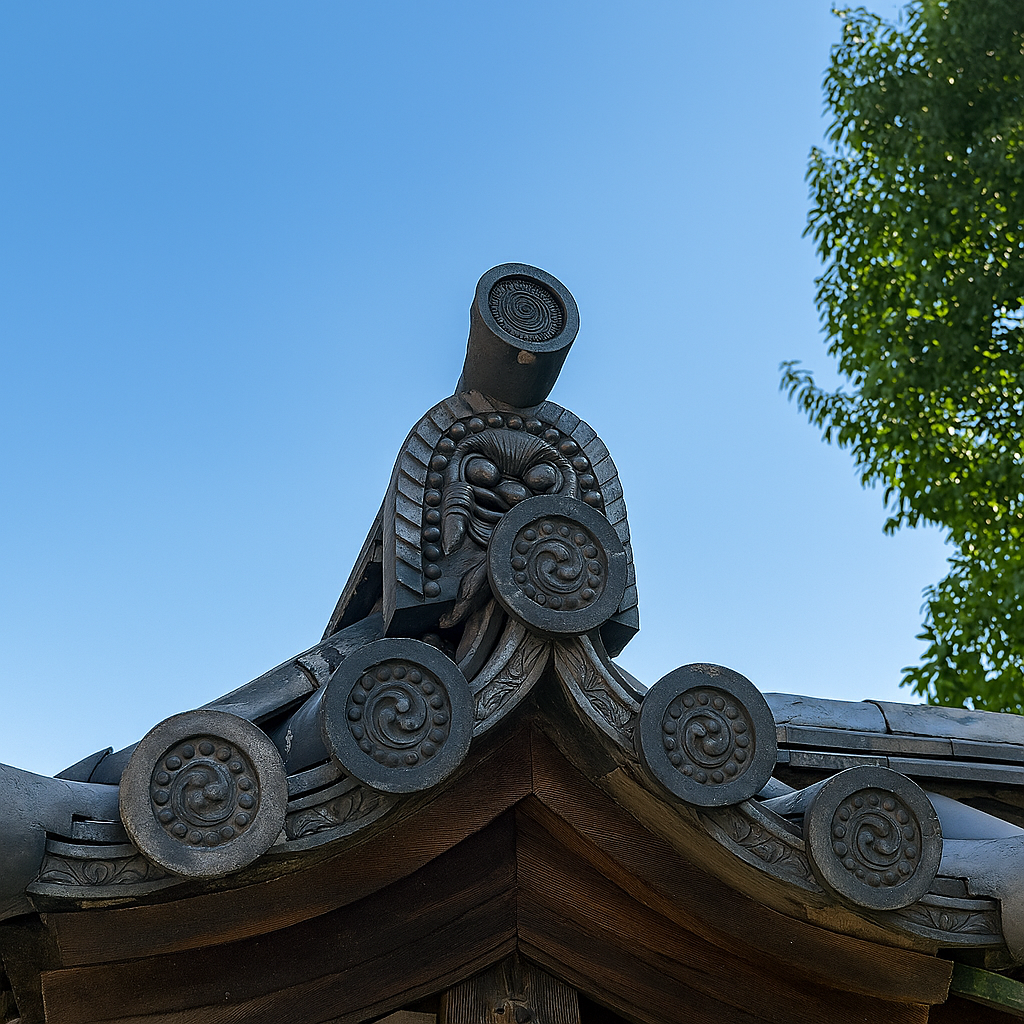Onigawara: Kyoto’s Fierce Roof Guardians
High above the streets of Kyoto, fierce-faced guardians keep silent watch. They are called onigawara—ornamental ridge-end tiles that blend craftsmanship, symbolism, and centuries of tradition.

From Floral Tiles to Demon Faces
Onigawara did not begin with menacing expressions. In the 7th and 8th centuries, temples used hanagawara—decorative tiles with floral designs—to protect the ridge ends of their roofs from weather damage. Over time, these evolved into oni-ita, flat boards depicting protective deities. Eventually, artisans began creating three-dimensional ogre faces to ward off evil spirits. This is how the iconic onigawara we know today came to life.
More Than Decoration
While they are beautiful examples of ceramic artistry, onigawara have always had a practical and spiritual purpose.
-
Practical: The tiles shield roof joints from rain and wind.
-
Spiritual: The fierce oni faces are believed to scare away evil spirits, misfortune, and even natural disasters.
Some historians believe the idea may have been influenced by distant cultures—similar to the protective Medusa heads of ancient Greece—brought to Japan via the Silk Road.
Kyoto’s Tile-Making Legacy
Kyoto has long been a hub for tile craftsmanship. The city’s Kyo-gawara tradition includes more than 700 different tile styles, with onigawara among the most elaborate. Each is handcrafted using techniques passed down for generations, ensuring that the tiles are both durable and artistically expressive.
A Magical Moment at Sennyu-ji
At Sennyu-ji Temple in Kyoto, visitors sometimes notice something unusual—one of the onigawara appears to have eyes that shine when the sunlight hits at just the right angle. Whether it is clever design or a happy accident, this tiny moment adds a spark of magic to a quiet temple visit.
Why They Still Matter
Even in modern Kyoto, onigawara remain an important link between architecture and belief. They remind us that buildings are more than just structures—they are living cultural artifacts, shaped by the hopes and fears of the people who built them.
Have you ever spotted an onigawara while exploring Kyoto?
Next time you visit a temple, look up—you might just meet one of these silent guardians staring back at you.
